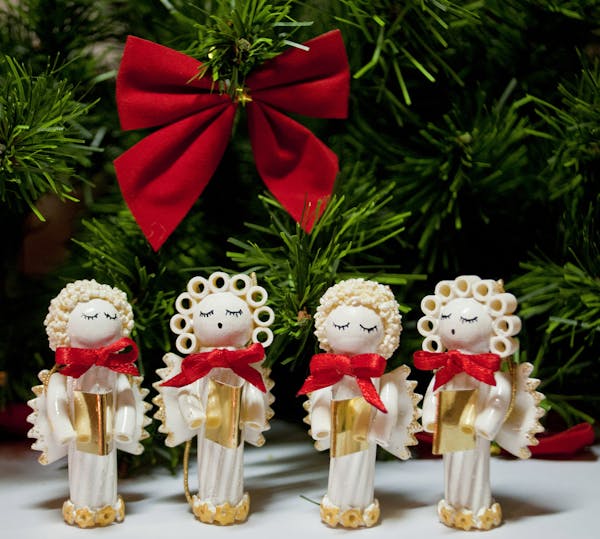How many times have you heard this? "Santa Claus was invented by Coca-Cola."
No. He wasn't. Some people think it's true because it gives them a little private sneer: "It's all advertising, man, it's all just a game to make you buy sugared fizzy water. Red coat, red Coke logo — don't you see? It's brainwashing!
This is ridiculous, and easily disproven. Coke was invented in 1885. Google "Santa 1875" and you'll see a guy with a tasseled cap, a big wide belt with a big buckle, boots with white fur fringe and, of course, the enormous white beard. Obviously, Coke didn't invent Santa.
But they did commission the most popular rendition.
The famous Coke Santas were painted by one of the greatest artists of the advertising world, Haddon Sundblom. Other artists had rendered Santa with the usual clichés, but Sundblom gave him a sense of inner delight that few artists could match. The same spirit infused his Coke models, who are genuinely delighted that someone just handed them a frosty bottle: They glow.
Sundblom also put Santa in familiar domestic settings — trimming a tree, looking at a wish list, shushing a pup that threatened to wake the house while he distributed the toys, helping himself to a refreshing caffeinated beverage from the fridge. He was Magic Grandpa, and Sundblom's version instantly made all the other commercial illustrators' attempts look like hired guys in fake beards.
I know what you're thinking: OK, Santa wasn't invented by Coke, but was he based on Finnish mushroom salesmen?
Good question. Santa, according to this tale, is based on the garbs of psychotropic mushroom distributors. Since they couldn't deliver their wares during winter blizzards, when snow blocked the door, they would clamber up on the rooftop and drop down the chimney — which would certainly be a shock to someone cold sober, let alone someone in the throes of a hallucination.
It gets better: They hung the shrooms to dry on tree branches that had been imported into the house. Oh, and the mushrooms — the Amanita variety — were red and white, so that's where Santa comes from.
Debunking: It almost auto-debunks, because it's something a stoner would invent in 1977 in a dorm. Obviously, he was not a fungal Finn.
Are there other Christmas myths? Of course. European cultures abound with nasty, ugly characters who show up around Christmas to torment bad children in various ways.
Krampus, the German anti-Claus, would drag kids to hell for a year. And then, to make it worse, you'd have to repeat a grade. The Icelandic myth of Gryla concerns a bitter, angry old lady who kidnaps bad children on Christmas and drags them to her residence, where she boils them to death. Today she probably uses the microwave.
Who could forget Frau Perchta, a delightful spirit from the Germanic lands? She wanders around for the entire 12 days of Christmas, carrying a long nasty knife for cutting open the bellies of the bad and removing their innards. (She replaces them with flotsam and garbage.) Den Mother of the year, that one.
These are pagan tales, but a lot of pre-Christian myths and practices get bundled into the celebrations at this time of year. For example: Romans invented the ugly holiday sweater.
Well, almost. The Romans had a festival called Saturnalia, originally celebrated on Dec. 17th. It was eventually extended another week, so people could complain about how modern Saturnalia was overblown, not like when they were kids, and we've all lost the true meaning, etc.
Gifts were exchanged, and they could be small humorous trifles. (Elephantus albus, you could say.) Societal roles were reversed: Slaves were served dinner by their masters. Gambling was permitted, and people drank, a lot. Homes were decorated. Business was suspended. Sound familiar?
A final touch: Men traded their togas, the sober garment of a respectable citizen, for garish Greek garments regarded as déclassé in normal times.
One final myth to debunk: "Jingle Bells" is a Christmas song.
It has "snow" and "bells," so some think it's a yule tune, but it's actually the 19th-century equivalent of a hot-rod song. The second and third verses describe the sleigh driver whipping the horse to its top speed and ending up in the ditch.
By the way, the volume with which you shout "HA HA HA HA" after "laughing all the way" is directly related to the strength of the Tom & Jerrys you mixed. Unless you swapped the hooch with Coke.
Merry Christmas! Have a grand and merry day.






